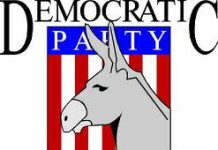|
INDIANAPOLIS - The newspaper editorial below was recently published in the Terre Haute Tribune-Star. I wanted to make sure you had a chance to read it for yourself. With the 2014 elections past and some folks looking over “what happened”, let’s keep our perspective: not dwell on what happened, but look to the future. The following newspaper editorial talks about what we know to be fact and not “spin.” The fact is that the Indiana State Legislature has made it so difficult to vote that many of the people I talk with just didn’t participate. Their fault, yes. But what about the responsibility of the Legislature to the American promise? Why should an elderly woman who never missed an election have to resign to an absentee ballot because she can’t stand in line or walk the distance to the vote center from the drop off and doesn’t trust the travel boards offered her? Why should a young person…having moved to Evansville within the last 30 days…have to forfeit his right to vote because he didn’t meet the deadline? And what about the infamous photo ID? If the majority party feels it so important, then set up alternative sites at the churches for the photo shoot. Supporters of the new law have accepted the unrealistic and out-of-touch assumption that everyone has access to the BMV for their photo. Well, the lady living in the high-rise doesn’t and never will but she, like me and you who vote, has a right to participate. Changes must be made. It is past time. It’s time they worked even harder to fix a real one. The Hoosier state ranks at the bottom in citizen participation in elections. This month, a mere 28 percent of the state’s voting-eligible population — a measure of people who could vote, regardless of their registration status — voted, according to early projections by the United States Election Project, based at the University of Florida. Those calculations put Indiana dead last in America in turnout. The Indiana voting system deserves most of the blame. It is true that the pathetic turnout for the 2014 election can partly be attributed to the low-profile offices at stake. Once every 12 years, the ballot features no races for president, U.S. Senate or governor. That was the case on Nov. 4. But a smaller percentage of Hoosiers cast ballots election after election, compared to residents of other states, including 2008 when Indiana turnouts peaked. Instead of being a calendar quirk, the small slice of participants this year illuminates a larger, systemic problem. Actually, it is a bundle of problems. The voter photo ID law lurks near the core of that bundle. Statehouse Republicans enacted the ID requirement in 2005. Their publicly stated reason was to prevent voter fraud. That sounds noble, but no such problem existed here or in any of the other states with Republican-led legislatures that caught onto the idea. It was an ingenious tactic. Pretending to eradicate fraud, the ID laws in reality made it harder for two Democratic-leaning segments of the population, the poor and elderly, to vote. Voter ID laws, on average, decrease turnouts by 4 to 5 percentage points, according to Michael McDonald, the University of Florida political scientist overseeing the Elections Project. Indiana also maintains a 1913-era registration deadline. Voters must be registered a month before the election, well before most people pay attention to the campaigns. In light of 21st-century technology and the voter ID law itself, the 29-days-before deadline makes no sense. State officials point proudly to Indiana’s long early voting period, but it begins, coincidentally, 29 days before the election. If other Midwestern states, including Iowa, Wisconsin and Minnesota, manage to register voters on Election Day in person, surely Indiana could register early voters on site. There’s more. Indiana also clings to America’s earliest poll-closing time on Election Day at 6 p.m., barely an hour after most people wrap up their work day. Unlike 33 other states, Indiana requires an excuse for people mailing in an absentee ballot. Its legislative districts are redrawn every 10 years by the political party in power so the borders isolate areas traditionally supporting the opposing party. Thus, races in all nine Indiana congressional districts this year were slam dunks for incumbents; and in the state legislative races, 69 of 125 seats up for grabs featured only one uncontested candidate. The state has implemented some honorable gestures to boost voting, but those efforts will yield only negligible results until the most obvious barriers are removed. Almost three-quarters of eligible adults had no hand in selecting their state and federal representatives on Nov. 4. That’s a genuine problem in need of substantive action. Tribune-Star, Terre Haute |





Really? The mythical handicapped person can vote on election day with many private organizations offering to help. Can vote for a month at handicap accessible voting centers. Can ask for a traveling board to come to their home or can vote absentee.
And that is not good enough? What a lame premise.
Indiana should be ashamed of itself for willfully disenfranchising many of its citizens. I know non-mythical handicapped folks for who getting the requisite picture ID is a huge hassle. It often involves lining up rides to distant cities for birth records, assembling other long lost documents and imposing on friends or relatives. The Republican party does much better with a low turnout and the anti-democracy voting policies many Republican led state legislatures enact only serve to underscore that sad fact. Their schemes to keep people from the polls show that they think, like socialism, democracy and voting are only for them.
Not a fan of these voting centers, but it is what it is. I prefer the tight community voting of the precincts myself.
Our voting centers here was not a bi-partisan effort which could possible be seen as a party led manipulation. There are plenty of options of voting before election day. I can see changing voting registration from a month to no less then a week before election because of the electronic age. Election time frame of 6:00 am to 6:00 pm should give a person that opportunity to vote, but we do hear of long lines at different voting centers that may cause a voter to give up. Early voting would correct this for this group of people. Maybe we should have a national holiday where all business is shut down except for the bare essentials?
I do believe in having the voter ID. How they obtain these can become a issue.
Gerrymandering effects the out come of elections. If one claims it doesn’t, why do they do it? If the districts would be required to resemble a rectangle similar to what the states west of the Mississippi were required to be back in the day, the out come would be more in tune with that geographic population.
Comments are closed.